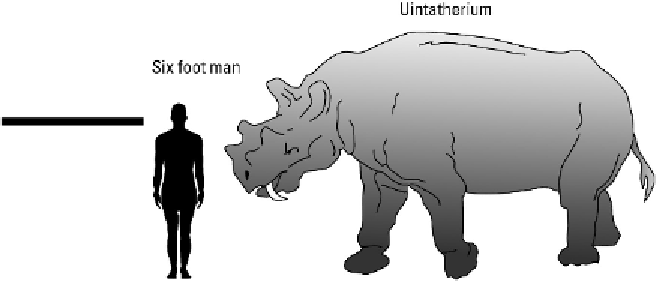Geology Reference
In-Depth Information
with, scientists continue to search for evidence to support their multiple hypotheses and determine if
some dinosaurs were indeed, warm-blooded.
Mammals during the Paleogene period experienced a surge in new species types as they
diversified to fill niches left open by the extinction of dinosaurs. Some were
insectivores
(eating only insects), while others were
herbivores
(eating plants) or
carnivores
(eating
other animals). The diversity of mammals in the Paleogene laid the foundation for the
vast diversity of modern mammals.
Living Large: Massive Mammals Then and
Now
During the Eocene epoch, which ran from about 56 to 34 million years ago, the first large
land mammals appeared. This now-extinct group is called the
uintatheres.
An example is
the giant, rhinoceros-like creature called
Uintatherium
illustrated in Figure 21-4.
Figure 21-4:
A
Uint-
atherium
mammal
from the Eocene
epoch.
While the uintatheres are extinct, ever since they appeared some type of large mammal
has existed on earth. In this section, I walk you through the well-documented evolution-
ary history of the two largest modern mammals, elephants and whales, and briefly de-
scribe the large mammals of the Pleistocene epoch ice ages.
Nosing around elephant evolution






